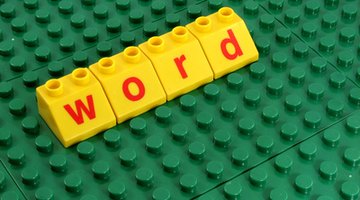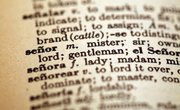The IPA (International Phonetic Alphabet) is a collection of characters that can be used to transcribe any human voice sound, from any language, in a way that all linguists and language enthusiasts worldwide can understand, regardless of their mother language or cultural background. Because the IPA includes symbolic representations of English and non-English speech sounds, trying to decipher its extensive body of characters can be a challenge for someone who just wants to transcribe an English word. To transcribe an American English word successfully and with limited confusion, your best bet is to find and use an IPA symbol chart that only includes speech sounds from American English.
Step 1
Briefly study an American English IPA chart, and become comfortable with its symbols and their associated pronunciations. People new to the IPA are sometimes confused at first, because certain symbols don't always make the sounds you'd expect based on what you've learned about the English alphabet in the past. Certain sounds in English that we consider two-letter sounds (such as the "sh" sound in "shell," for example) are represented by just one character in the IPA. Take the time to learn and get comfortable with the different sounds and their symbols.
Use antimoon.com's IPA chart for this exercise, linked in the Resources section.
Step 2
Slowly pronounce the word that you want to transcribe out loud to yourself. Ask yourself what sounds you hear. Try to write the word out using IPA notation, without referring to your IPA chart.
Step 3
Look back to your IPA chart and pronounce the word again. Double-check any symbols that you're not sure about against the chart, and correct any mistakes.
With a little bit more time and patience, you can learn the vocabulary of phonetic transcription that will help you identify when you're using the right sound. If you look at the University of Arizona's "Sounds of Standard American English," for example, you'll notice that sounds are categorized as either "voiced" or "unvoiced." A voiced sound uses the vocal cords in its pronunciation, while an unvoiced sound does not. Pronounce the sounds "p" and "b" right after each other for an illustration of this concept. You'll notice that "p" is unvoiced (you don't use your vocal cords when producing the sound), while "b" is voiced.
The place of articulation on the University of Arizona's chart describes where you place your tongue, teeth and lips to make a sound. For example, you make a bilabial sound by bringing your lips together. For labial dental sounds, you place your top teeth upon your lower lip. You make the glottal sound in English (represented by a question-mark-like character) by bringing your vocal cords together to abruptly stop the flow of air. To hear this sound, say "uh-oh." You can hear the glottal stop between the first and second word of this common phrase.
The manner of articulation describes how you move air to make a specific speech sound. For example, when you pronounce a stop, you release a short puff of built-up air. When you pronounce a fricative, you make the sound by obstructing a continuous flow of air, holding parts of your mouth together (tongue, teeth, lips, etc.) to form a tiny space that you push air through.
If you don't speak American English (i.e., you speak British English, English in another accent or a different language altogether), you won't find all of the speech sounds you need in the American English IPA chart. Search your language and IPA using Google to find the appropriate chart for your language.
Related Articles
References
Tips
- With a little bit more time and patience, you can learn the vocabulary of phonetic transcription that will help you identify when you're using the right sound. If you look at the University of Arizona's "Sounds of Standard American English," for example, you'll notice that sounds are categorized as either "voiced" or "unvoiced." A voiced sound uses the vocal cords in its pronunciation, while an unvoiced sound does not. Pronounce the sounds "p" and "b" right after each other for an illustration of this concept. You'll notice that "p" is unvoiced (you don't use your vocal cords when producing the sound), while "b" is voiced.
- The place of articulation on the University of Arizona's chart describes where you place your tongue, teeth and lips to make a sound. For example, you make a bilabial sound by bringing your lips together. For labial dental sounds, you place your top teeth upon your lower lip. You make the glottal sound in English (represented by a question-mark-like character) by bringing your vocal cords together to abruptly stop the flow of air. To hear this sound, say "uh-oh." You can hear the glottal stop between the first and second word of this common phrase.
- The manner of articulation describes how you move air to make a specific speech sound. For example, when you pronounce a stop, you release a short puff of built-up air. When you pronounce a fricative, you make the sound by obstructing a continuous flow of air, holding parts of your mouth together (tongue, teeth, lips, etc.) to form a tiny space that you push air through.
Warnings
- If you don't speak American English (i.e., you speak British English, English in another accent or a different language altogether), you won't find all of the speech sounds you need in the American English IPA chart. Search your language and IPA using Google to find the appropriate chart for your language.
Writer Bio
A professional writer since 2006, Colleen Reinhart has held positions in technical writing and marketing. She also writes lifestyle, health and business articles. She holds a Bachelor of Arts and Business degree from the University of Waterloo, and a Master's degree in speech-language pathology from the University of Toronto.











